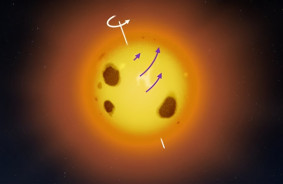Researchers at the University of Michigan have developed an OLED-based night vision device that is thinner than paper. This technology does not require major changes to existing manufacturing processes.
Chris Gibbons, a professor of electrical engineering and computer science at the University of Michigan, has potentially made one of the most significant breakthroughs in night vision technology with a new type of organic light-emitting diodes (OLED).
The five-layer OLED film, measuring less than 1/10 the thickness of a human hair, transforms infrared radiation into visible light and amplifies it over 100 times. All this is achieved using technologies already employed in the production of OLED panels.
The layer that absorbs photons, combined with the five-layer OLED stack, converts infrared light into electrons. The OLED stack generates five photons for each electron that passes through it. These electrons are then converted into photons of visible light. While some of the photons enter the user’s eye, others are reabsorbed, creating a positive feedback loop that further enhances the amount of emitted light. The team believes they can further optimize the design for better performance.
There is also a "memory effect," known as hysteresis, generated within the OLED, which the research group thinks could lead to applications in computer vision systems. Machine learning and neural networks could potentially perceive and interpret images and light signals using the OLED night vision system. Depending on the length and brightness of the light source, the duration and intensity of the memory effect change.
This raises the question of how this "ghosting" effect will impact any future product.
“The device operates at much lower voltage compared to traditional image intensifiers,” the research paper states. Given that its thickness is just microns, one might assume that the device could be lightweight. Lead author Raju Lampande notes, “This is the first demonstration of significant photon amplification in a thin-film device.”
Modern night vision devices collect ambient and infrared light that passes through a photocathode and is converted into electrons. These electrons then traverse a microchannel plate, which multiplies them before directing them onto a phosphor screen. The phosphor screen reacts to the electrons and converts them into visible light.
For effective night vision, star light is usually sufficient to allow users to see in almost complete darkness. Images are commonly green since the eyes are more sensitive to green light and perceive details better within that spectrum. However, there are white night vision devices, color options, and even capabilities to detect thermal signatures.
Sources: New Atlas, EurikAlert, Nature Photonics














Comments (0)
There are no comments for now